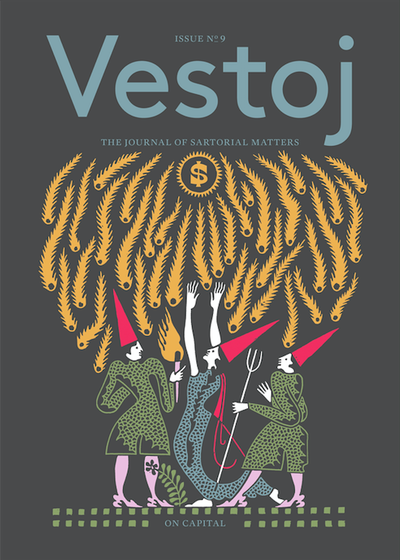
The Journal of Sartorial Matters.
EUR 15.00 — Released 15 November 2013
Fashion and Power’ is a subject as well-trodden as it is open to new interpretations. Dress, we know, can be a powerful weapon of control and dominance but it can also be both subversive and empowering. The power of fashion is of course integral to identity and body politics, but today it is as important in terms of global economy, nationhood and celebrity culture as well as in all practices aiming to subvert the status quo. In contemporary consumer culture the link between power, social discipline, conformity and fashion is often so entrenched that exist-ing norms are beyond our discernment, causing us to often regulate and control ourselves without any deliberate coercion from others. What then happens when we step out of line? In this issue we explore what you risk when you deviate from the norm and what you gain from following the beaten path, but we also examine the consequences of a system that doesn’t encourage discord or opposition. We have looked at how the politics of the fashion system allow power relations to be built and maintained, why it is so hard to be critical in fashion and who gains from the industry’s rigid and static power structure. Seeing as fashion is often described as a mirror of our culture, we have been curious to better understand how the demonstrations of power within the fashion industry are displayed and why so few today appear to challenge them. Could it be that this is endemic of a more widespread attitude in society? The fashion industry, to those both inside and out, is a place full of smoke and mirrors that can often be as bewildering as it is exasperating. As much as fashion itself can act as a crutch to allow us to present an idealised version of ourselves to the world, so the fashion industry is keen to conceal its flaws. Every-thing is fabulous and nothing ever fails. But behind this barrier of sound bites, gate keeping and public personas are actual people of course, full of contradictions and complexities. To move beyond the trite slogans and one-liners, one of the most important skills to learn in fashion is how to read between the lines. It’s in this space that you can tell what a critic really thinks of a collection, what an executive worries about, what a designer is going through and what a communications director wishes he could disclose. For this issue we have had to learn a lot about reading between the lines. We have had to deal with being denied access for spurious reasons and coming up with Plan Bs and Cs and sometimes Ds instead. We have struggled with the common occurrence of silent PRs in the room during interviews, hovering in the background, purportedly to assist or offer ‘additional information,’ whereas in fact their presence engenders implicit censure for both the reporter and her subject.We have engaged in covert power struggles to attempt to get what we want, and we have lost as many times as we have won. But perhaps most importantly we have become sometimes painfully aware of the hierarchy of power in the fashion industry, and our own place in it. The echelons of value and power in fashion tend to be reproduced in order to ensure that the tastemakers in our culture remain unchallenged. In this sense, fashion reflects, rather than renews, society. Fashion promotes a set of values only if those values reflect the current trends in our culture. With this in mind one might argue that while fashion creates a sense of innovation and constant renewal, its inherent structure is harder to challenge or change. For fashion then to be truly radical, we need to question its very systems and structures. Only here lies the potential for truly pioneering cultural expression.
Sign up or Log in to join the discussion.